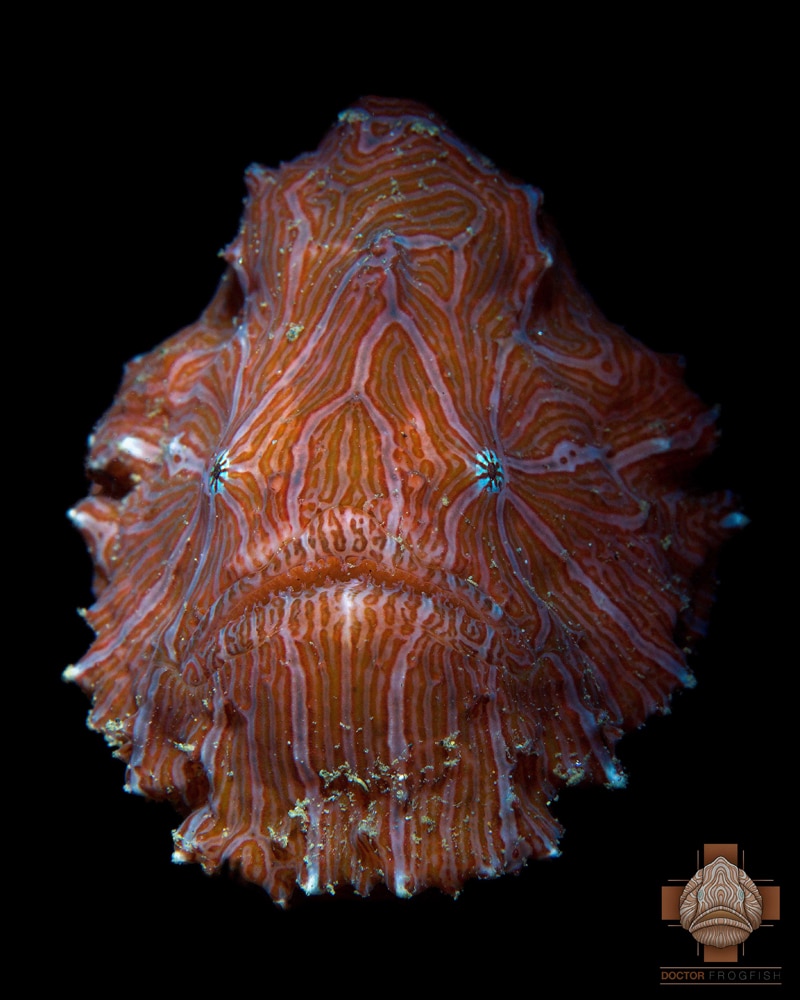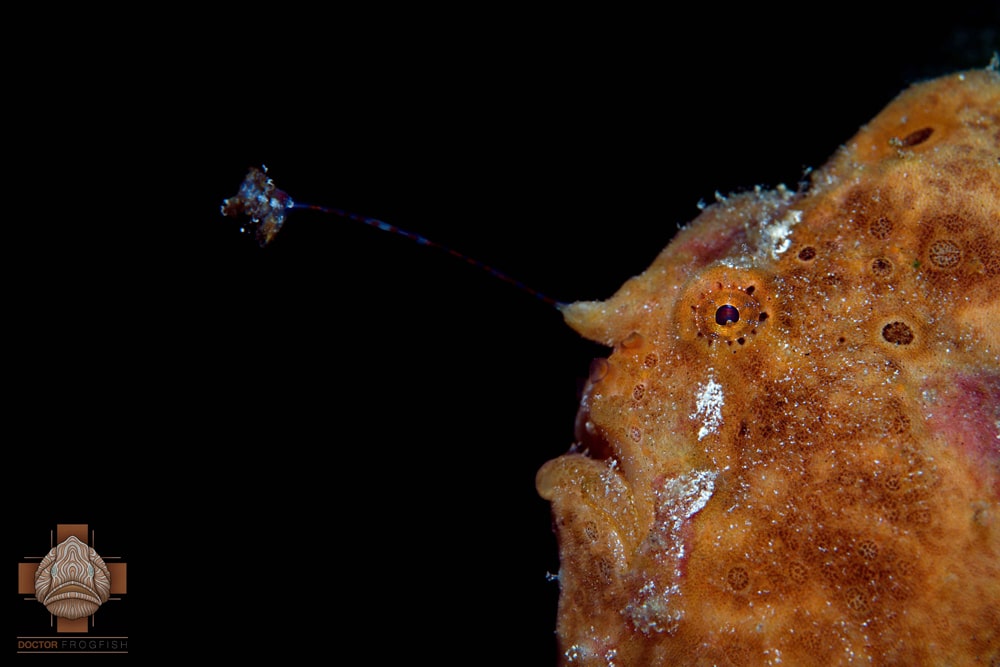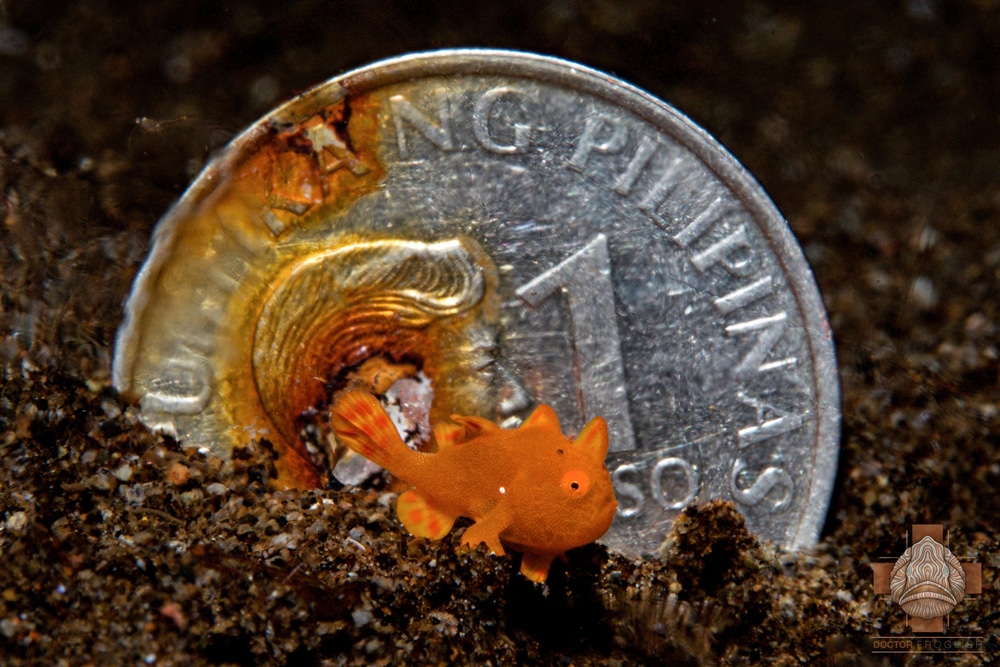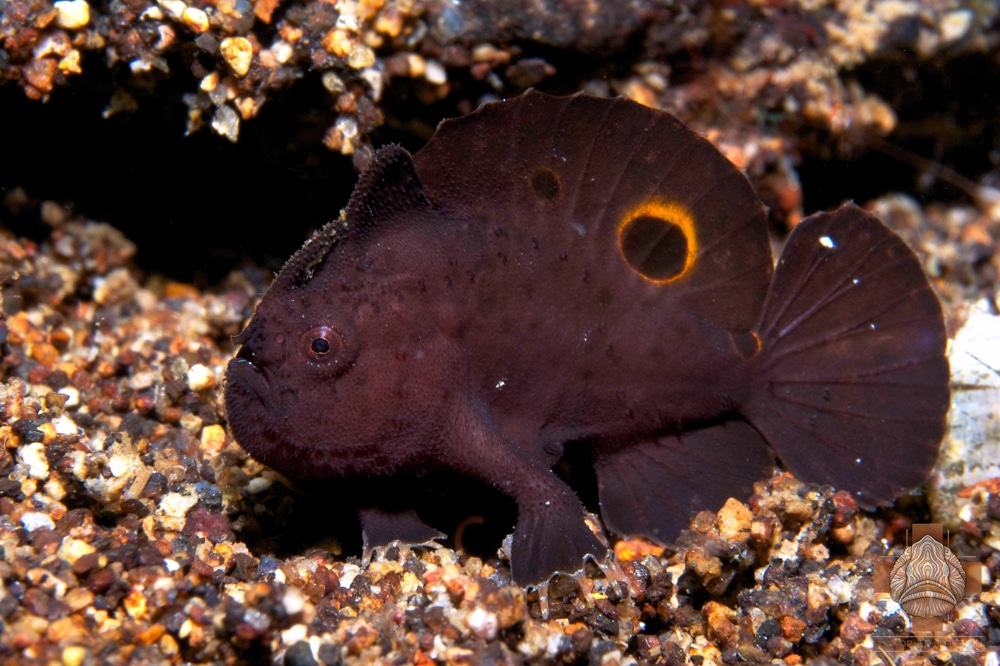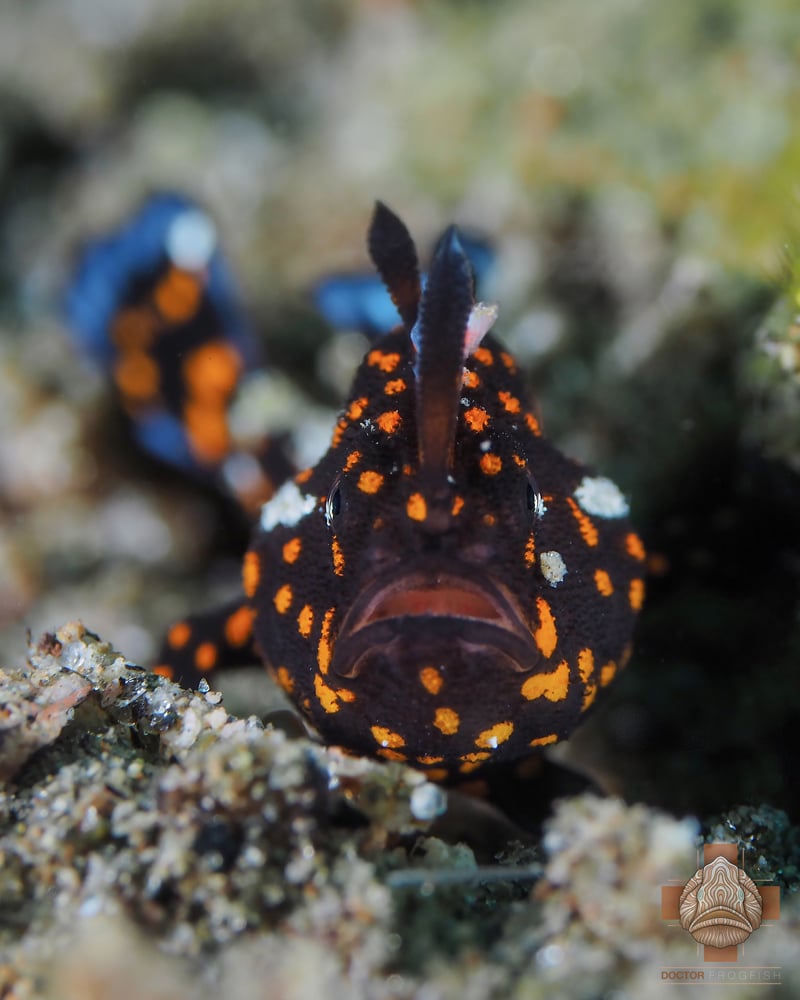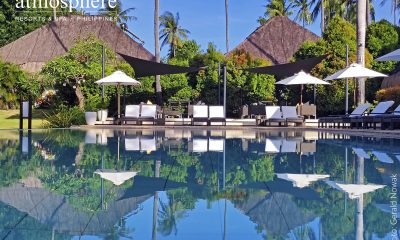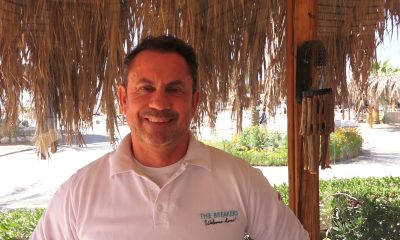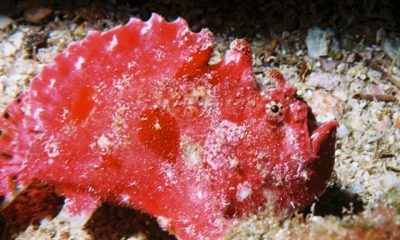News
Scubaverse Underwater Photographer Interview: Daniel Geary
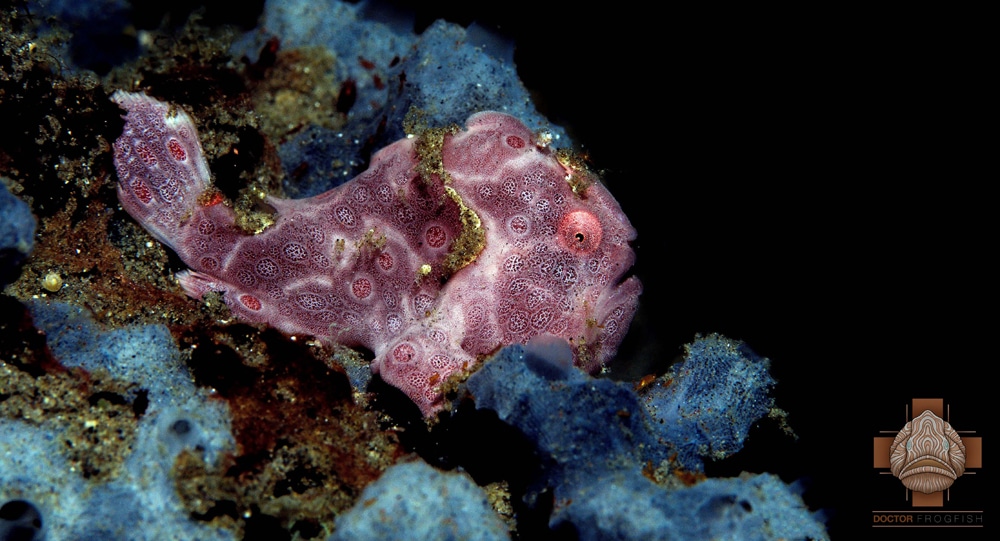
In an ongoing series, Scubaverse’s Underwater Photography Editor Nick Robertson-Brown talks to underwater photographers from around the world that he admires. In this blog: Daniel Geary…
 Daniel was born and raised in Orlando, Florida, fostering a love of the ocean since he was born. He has been diving for about ten years. After falling in love with the Philippines after his first visit, he moved there full time about five years ago and is currently based in Dauin, Philippines. Daniel teaches an exclusive PADI Frogfish Specialist Course with Atmosphere Resorts. He has won First Place in the Philippines-wide SNUPs Underwater Photo Contest, as well as Honorable Mentions in the OceanArt Competition and the Beneath The Sea Imaging Competition. He has had photos and articles published in Sport Diver Magazine, the Undersea Journal, EZDive Magazine, and online at DivePhotoGuide. His latest published photograph was the cover photo of the December 2017 quarterly edition of the Copeia Scientific Journal. He is on a quest to see as many frogfish species as possible and his current count is at least 17. Formerly photographing as Mean Guign Photography, Daniel can now be found on facebook and instagram under the name Dr. Frogfish, as well as the still-under-construction www.doctorfrogfish.com. For a portfolio of his photography over the past few years, you can check out www.meanguignphotography.com.
Daniel was born and raised in Orlando, Florida, fostering a love of the ocean since he was born. He has been diving for about ten years. After falling in love with the Philippines after his first visit, he moved there full time about five years ago and is currently based in Dauin, Philippines. Daniel teaches an exclusive PADI Frogfish Specialist Course with Atmosphere Resorts. He has won First Place in the Philippines-wide SNUPs Underwater Photo Contest, as well as Honorable Mentions in the OceanArt Competition and the Beneath The Sea Imaging Competition. He has had photos and articles published in Sport Diver Magazine, the Undersea Journal, EZDive Magazine, and online at DivePhotoGuide. His latest published photograph was the cover photo of the December 2017 quarterly edition of the Copeia Scientific Journal. He is on a quest to see as many frogfish species as possible and his current count is at least 17. Formerly photographing as Mean Guign Photography, Daniel can now be found on facebook and instagram under the name Dr. Frogfish, as well as the still-under-construction www.doctorfrogfish.com. For a portfolio of his photography over the past few years, you can check out www.meanguignphotography.com.
NRB: How did your underwater photography start?
DG: I bought an Olympus Stylus Tough about ten years ago and used it while snorkeling. I brought it with me when I travelled to the Philippines for two months, roughly seven years ago, and realized that I had the bug and needed to upgrade and have been photographing ever since.
NRB: What is your favourite u/w camera equipment (past & present) & why?
DG: My favorite camera equipment would have to be my old Olympus EPL-5. I currently use an Olympus OMD EM5, Mark II, but the Olympus EPL-5 is what made me realize how much I really enjoyed underwater photography. This was the first camera I owned that allowed me to shoot using fully manual settings and a dedicated 60mm macro lens. I love that it is a little bit bigger than a compact camera, but gets shots that are comparable to much more expensive, and bigger, DSLR cameras.
NRB: What would be your advice to anyone new to underwater photography?
DG: You need to be a great diver to be a great photographer, and you need to understand the camera you are using. Too many times I see people who have a massive DSLR rig and few dives and don’t understand why they can’t get photos like the ones they saw on facebook. Buoyancy is incredibly important, without it your photos will suffer. I don’t lie on the ground when I photograph, like many photographers, instead choosing to contort my body into weird positions to get the shot I want – impossible without good buoyancy. As for equipment, start with something small, like the Olympus TG-5 or 6, that you can build upon. I always suggest the TG-5 or 6 because it has an internal flash that is powerful enough to use for macro on its own, but can be expanded with additional external strobes and lenses or dome ports. If you buy a big rig, BUY FLOATS. A neutrally-buoyant camera is so much easier to use than a camera that sinks like a rock. I teach photo workshops and one of the biggest reasons my students are having trouble is that their camera rig is too heavy underwater.
NRB: What, or who, has been your single biggest inspiration for your underwater photography?
DG: My single biggest inspiration, animal-wise, for my underwater photography has been the weird and wonderful frogfish. I love introducing people to this fish who have never heard of it, or who don’t know much about it, and I am always inspired to try and show rare behaviors, color variations, or species to a bigger audience. My biggest inspirations, person-wise, are the people that are champions for the critters, those that are not afraid to speak out about the lack of ethics that is evident in the age of photographer on social media. Alex Tattersall, Markus Roth, and Saeed Rashid, three photographers who are vocal about ethics in underwater photography, come to mind.
NRB: What image are you most proud of and why?
DG: The image I am most proud of is my well known “Investment Opportunity” shot. It was a finalist in the OceanArt Competition in 2017. I’m proud of it because it is completely different from everything else you see out there and is my signature shot – a juvenile frogfish in front of a Philippine Peso coin. The coin has rust that matches the baby frogfish in the photo, it includes the location (Philippines) in the text of the coin, and it shows just how small these little critters are. It tells an entire story without needing an explanation. I have been photographing with a coin since 2014 and none of my shots have come close to this one in terms of composition.
NRB: Where is your favourite dive location, and is it for the photography?
DG: My favorite dive location is Dauin, Philippines. I have been diving here for seven years now and have made it my home for the past five years. It is great for photography because you have the macro heaven on the coast, more frogfish than anywhere else, but you can put on your wide angle setup and go photograph turtles, jacks, and sea kraits over at Apo Island, 30 minutes away. I also love that most dive sites are shore accessible, since that is my preferred way to dive.
NRB: What are you views on marine life manipulation, moving subjects?
DG: Thank you for asking this question. I strongly believe that marine life should NOT be manipulated! I will admit, I have moved marine life in the past. That is how I was taught by a photographer I looked up to at the time, so I thought it was okay. I made the decision to stop moving marine life over three years ago and have been known to stop complete strangers from moving marine life underwater. I also limit the amount of photos I take of an animal as I believe that taking hundreds of photos of a single critter is just as bad or worse than moving the subject itself. Good photographs should arise from the talent and skill (and luck, of course) of the photographer, not an exotic animal moved into a better background. You can check out my articles about alternatives to manipulation – Part I and Part II, for some good tips.
NRB: What do you look for when you are making your images?
DG: Frogfish! No, I just look for something in the viewfinder that will translate to a good photo and make me think ‘Wow!’ I prefer to photograph really cool eyes, natural patterns, or funky behavior. I like to showcase natural camouflage, like a juvenile cowfish staring at me between two blades of seagrass, or a frogfish peeking out between crinoid arms, instead of moving the offending habitat out of the way for a ‘clear’ shot. I don’t look for super specific poses or backgrounds since that tends to put me in a box mentally.
NRB: What motivates you to take u/w photos?
DG: The critters motivate me. Most of the animals I photograph are unknown to non-divers, and some of them are even unknown to many divers themselves. Everyone knows what a sea turtle looks like, a seahorse, shark, dolphin, whale, clownfish etc, and those animals get the most attention, the most scientific research grants, and the most screen time. I believe that many of these little critters that I photograph are incredibly important to tourism but are routinely overlooked by science. If I can use my photos to help educate a bigger audience about the existence of these animals and how cool and interesting they are, which could result in them getting more attention and research, then that’s all the motivation that I need.
NRB: If you could photograph any one thing/place what or where would that be?
DG: If you asked me this question before I went to Ambon, the answer would be the Psychedelic Frogfish, but I already photographed one, so I will have to think for a minute. I guess that if I could photograph any one thing, it would have to be the Red Handfish in Tasmania! Its so weird and rare and has the coolest mohawk.
To find out more about Daniel, visit his website by clicking here.
Gear News
Go anywhere with Stahlsac
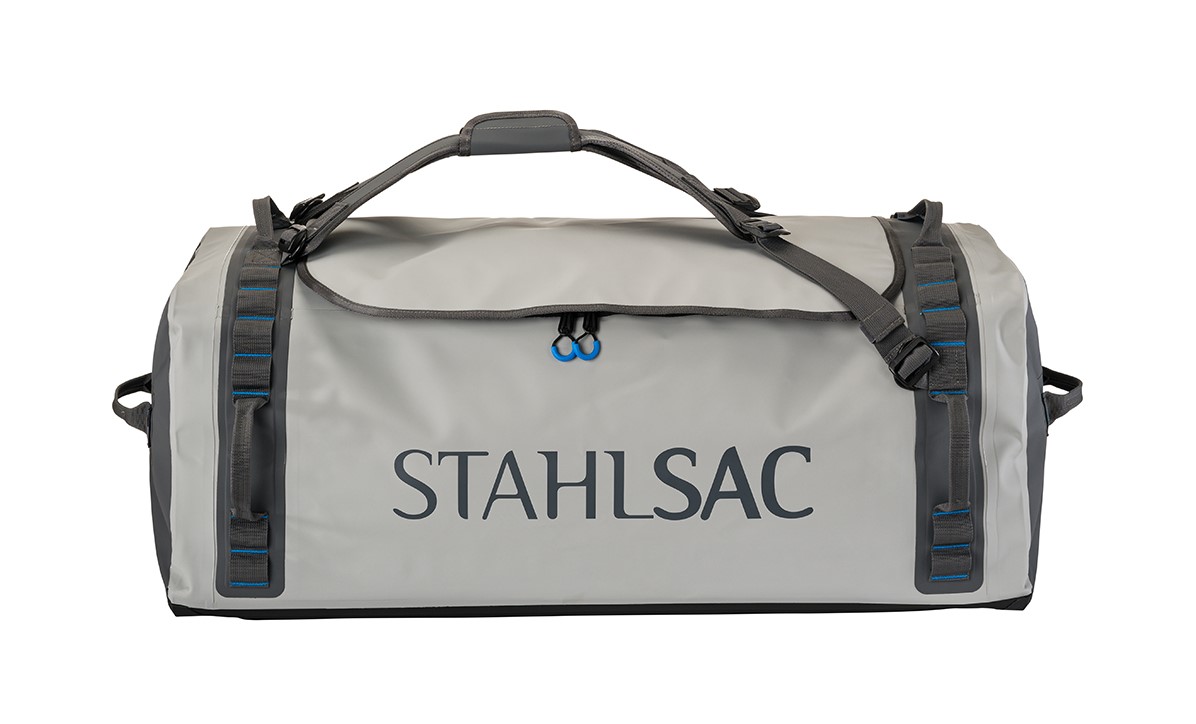
Stahlsac dive bags and travel luggage are built for our community of divers, surfers, kayakers and outdoor explorers who need bags that are constructed with durability, toughness, and 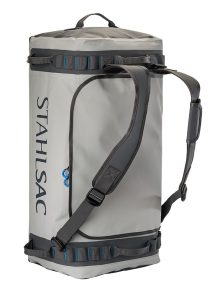 the highest quality the industry has ever seen. We were founded by one man determined to build better watersports and dive bags, and today, that mission is carried on by many. Adventure doesn’t just present itself; it requires discovery. When we design dive bags, we make sure they are tough enough for you to explore in all conditions—warm and cold, wet and dry—to the nearest and farthest reaches of the earth. And for those times you want to push the boundaries of adventure, Stahlsac dive bags make sure you can truly GO ANYWHERE.
the highest quality the industry has ever seen. We were founded by one man determined to build better watersports and dive bags, and today, that mission is carried on by many. Adventure doesn’t just present itself; it requires discovery. When we design dive bags, we make sure they are tough enough for you to explore in all conditions—warm and cold, wet and dry—to the nearest and farthest reaches of the earth. And for those times you want to push the boundaries of adventure, Stahlsac dive bags make sure you can truly GO ANYWHERE.
Abyss Duffels
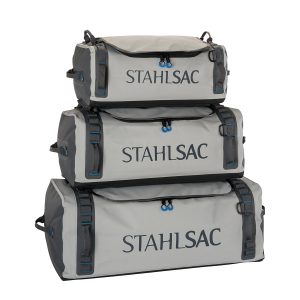 Made to be your partner-in-crime on every adventure, Stahlsac’s Abyss Duffels protects your gear from Mother Nature’s worst. Tough and 100% waterproof with double-TPU nylon material that shrugs off daily wear-and-tear, and RF-welded seams further boost the bag’s potential for lifelong exploring. Get Wet. Get Lost. Go Anywhere with Abyss.
Made to be your partner-in-crime on every adventure, Stahlsac’s Abyss Duffels protects your gear from Mother Nature’s worst. Tough and 100% waterproof with double-TPU nylon material that shrugs off daily wear-and-tear, and RF-welded seams further boost the bag’s potential for lifelong exploring. Get Wet. Get Lost. Go Anywhere with Abyss.
- A weatherproof duffel for trips, travel, and adventure
- Ultra-durable double-TPU nylon protects your gear
- Material repels water and keeps your equipment dry
- RF-welded seams are flush, tough, and waterproof
- Removable straps transform duffel into backpack
- Zippered internal stow compartments carry essentials
- External zippered flap is easy to open and close
- Welded external handles make transporting a breeze
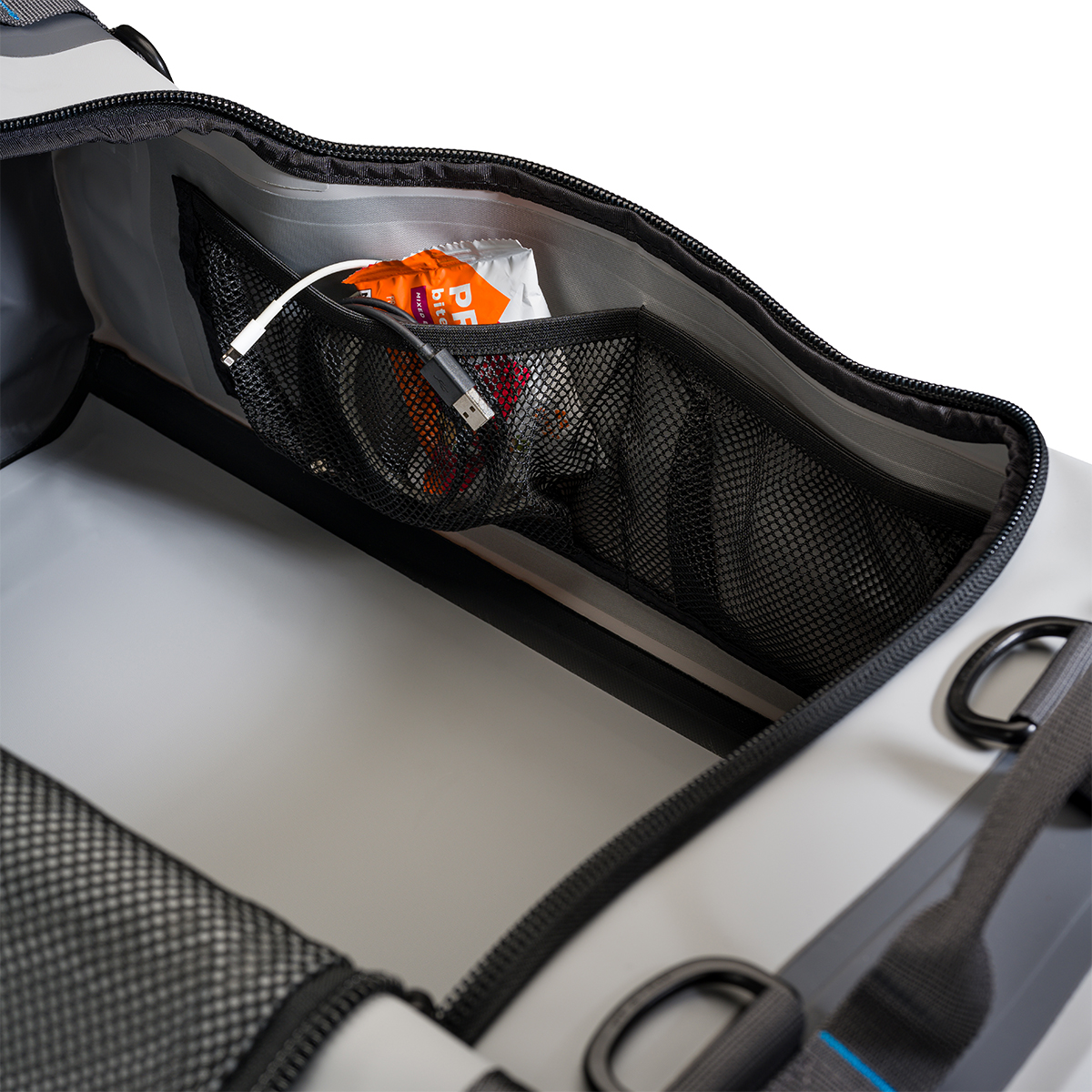
Panama Mesh Backpack
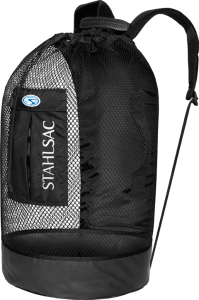 The most copied design in scuba diving, the Stahlsac Panama Mesh Backpack is the “original” design and features two high-density foam padded shoulder straps, extra durable polyester mesh, duffel bag handles and our unique zippered dry pocket inside that combines with a wet pocket outside. The bottom’s built from reinforced 18-gauge PVC nylon to combat the wear and tear of your active coastal lifestyle, and, as a bonus in every bag, we supply a 12″ x 12″ mesh drawstring satchel for extra stowing utility. Pack up your beach kit and go.
The most copied design in scuba diving, the Stahlsac Panama Mesh Backpack is the “original” design and features two high-density foam padded shoulder straps, extra durable polyester mesh, duffel bag handles and our unique zippered dry pocket inside that combines with a wet pocket outside. The bottom’s built from reinforced 18-gauge PVC nylon to combat the wear and tear of your active coastal lifestyle, and, as a bonus in every bag, we supply a 12″ x 12″ mesh drawstring satchel for extra stowing utility. Pack up your beach kit and go.
- Density foam padded shoulder straps
- Outside wet/dry pockets
- 2 Carry handles
- Tough, snag-resistant polyester mesh
- Reinforced PVC bottom
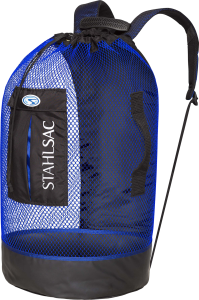
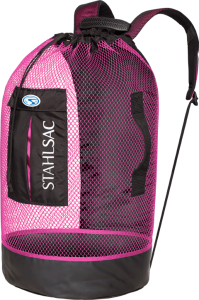
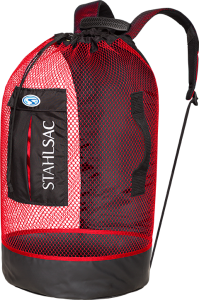
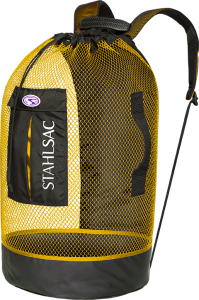
For more information about Stahlsac bags, visit www.stahlsac.com/dive-bags.
Sea & Sea is the home of Stahlsac and other leading diving brands in the UK.
Blogs
EXCLUSIVE: Jeff Goodman interviews Mark Spiers, CEO of New Scuba Diving Training Agency NovoScuba

In a video recorded exclusively for Scubaverse.com, Jeff Goodman interviews Mark Spiers, CEO of new scuba diving training agency NovoScuba.
Find out more about NovoScuba at www.novoscuba.com.
-

 News3 months ago
News3 months agoCapturing Critters in Lembeh Underwater Photography Workshop 2024: Event Roundup
-

 Marine Life & Conservation Blogs3 months ago
Marine Life & Conservation Blogs3 months agoCreature Feature: Swell Sharks
-

 Blogs2 months ago
Blogs2 months agoMurex Resorts: Passport to Paradise!
-

 Gear Reviews3 weeks ago
Gear Reviews3 weeks agoGEAR REVIEW – Revolutionising Diving Comfort: The Sharkskin T2 Chillproof Suit
-

 Blogs2 months ago
Blogs2 months agoDiver Discovering Whale Skeletons Beneath Ice Judged World’s Best Underwater Photograph
-

 Gear Reviews3 months ago
Gear Reviews3 months agoGear Review: Oceanic+ Dive Housing for iPhone
-

 News2 months ago
News2 months agoPADI Teams Up with Wellness Brand Neuro to Drive Ocean Change and Create a Blue State of Mind
-

 Marine Life & Conservation2 months ago
Marine Life & Conservation2 months agoSave the Manatee Club launches brand new webcams at Silver Springs State Park, Florida


